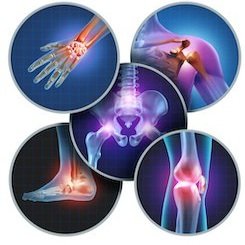Orthopedic Bodywork and Massage
Orthopedic bodywork and massage is an integrative manual therapy approach inspired by orthopedic medicine—the study, assessment, and care for the body’s tissues of movement. These tissues include the skeleton, joints, muscles, fascia, and other supporting structures like ligaments and cartilage.
Starting with an assessment, an orthopedic bodywork practitioner looks for dysfunction or asymmetry in the client’s musculoskeletal system. Thorough assessment allows the practitioner to understand the current state of injury or medical condition and to choose specific, individualized manual and exercise techniques to improve a client’s function.
Treatment involves a variety of techniques, including targeted massage, stretches, active engagement of tissues, and muscle, energy, and breath work. After and during treatment, the practitioner reassesses the client’s body, which allows them to experience and understand the functional changes in their body immediately. Exercises, stretches, and habit changes can be recommended to help sustain these changes.
Brian Ubert is Kinetikos’ orthopedic bodywork practitioner. Visit his bio to learn more about his training, and read below for more information about orthopedic bodywork.
Benefits of Orthopedic Bodywork
Depending on a client’s symptoms, orthopedic techniques seek to:
Reduce tension in soft tissue, restore flexibility, and improve circulation.
Create pain-free and efficient movement by balancing muscle groups and ligaments and increasing joint space.
Restore structural alignment throughout the body.
Improve the client’s gait cycle.
Identify and correct dysfunctional muscle firing patterns to improve muscle control and joint stability.
Encourage functional scar tissue formation.
Increase total lung capacity.
Restore musculoskeletal neutrality by increasing activity in the “rest and relax” part of your nervous system (aka the parasympathetic nervous system).
Who Should Receive Orthopedic Bodywork?
Everyone develops muscle imbalances and physical compensation patterns overtime, so orthopedic bodywork can benefit anyone. It is especially helpful for those with chronic pain and reduced mobility and for those who are recovering from an injury. It is a useful adjunct to physical therapy or rehabilitation therapy to speed recovery and hasten a return to normal activity. It can also increase readiness for those who are event training.
For complex cases, orthopedic bodywork works best as part of a multidisciplinary approach. Reach out to Brian directly if you have questions about how orthopedic bodywork can help you.
What Is an Assessment and Why Is It Important?
An orthopedic bodywork assessment is an examination that provides an overview of a client’s current tissue condition, structural alignment, muscle firing patterns, and joint mobility.
This evaluation is a systematic process of gathering information. Our bodies are an asymmetrical network, and as bodyworkers, we want to encourage bi-lateral symmetry. During a musculoskeletal assessment, each body part is compared to an ideal parameter as well as to the other side of the body in a sequential manner to determine abnormalities in alignment of bone, joint, and muscle. It provides the practitioner with feedback necessary to determine appropriate treatment programs, reveal important aspects of the nature of the condition, including the tissues most likely involved, and the status of those surrounding tissues.
As assessment will happen at the beginning of each session and may include time both on the table, sitting on the table, or standing. Brian may ask a client to move a joint or part of the body, or he may perform the movement for them. Some joints or tissues will be re-assessed during and after treatment to quantify change.
How Is Orthopedic Bodywork Different Than a Deep Tissue or Sports Massage?
Some techniques that are used in deep tissue or sports massage are incorporated into orthopedic bodywork, but the flow of a session is different and a wider variety of techniques are used.
Orthopedic bodywork pairs an assessment of the body’s soft-tissues and compensation patterns with a knowledgeable practitioner who understands how these compensations may be creating pain and interfering with optimal musculoskeletal function. The practitioner will select specific massage, manual therapy, and exercise techniques to address these specific issues. Some of these techniques will be similar to techniques in a sports or deep tissues massage. A typical massage may feel good but the benefits may be temporary since they not informed by this breadth of information.
And unlike a sports massage, orthopedic bodywork is appropriate for a wide range of bodies - not just those who are involved in intense physical activities.
Is an Orthopedic Massage Relaxing?
One of the primary goals of orthopedic bodywork is to create the conditions where injured or tense tissues can finally relax. When tissue is injured, it is in an up-regulated neurological state (aka “fight or flight”). The goal of a session or treatment program is to restore neutralitity. By encouraging a down-regulated neurological state (aka “rest and relax”), the body can progressively heal. So the session itself may be relaxing, but also long-term relaxation and health of tissues becomes more likely.


